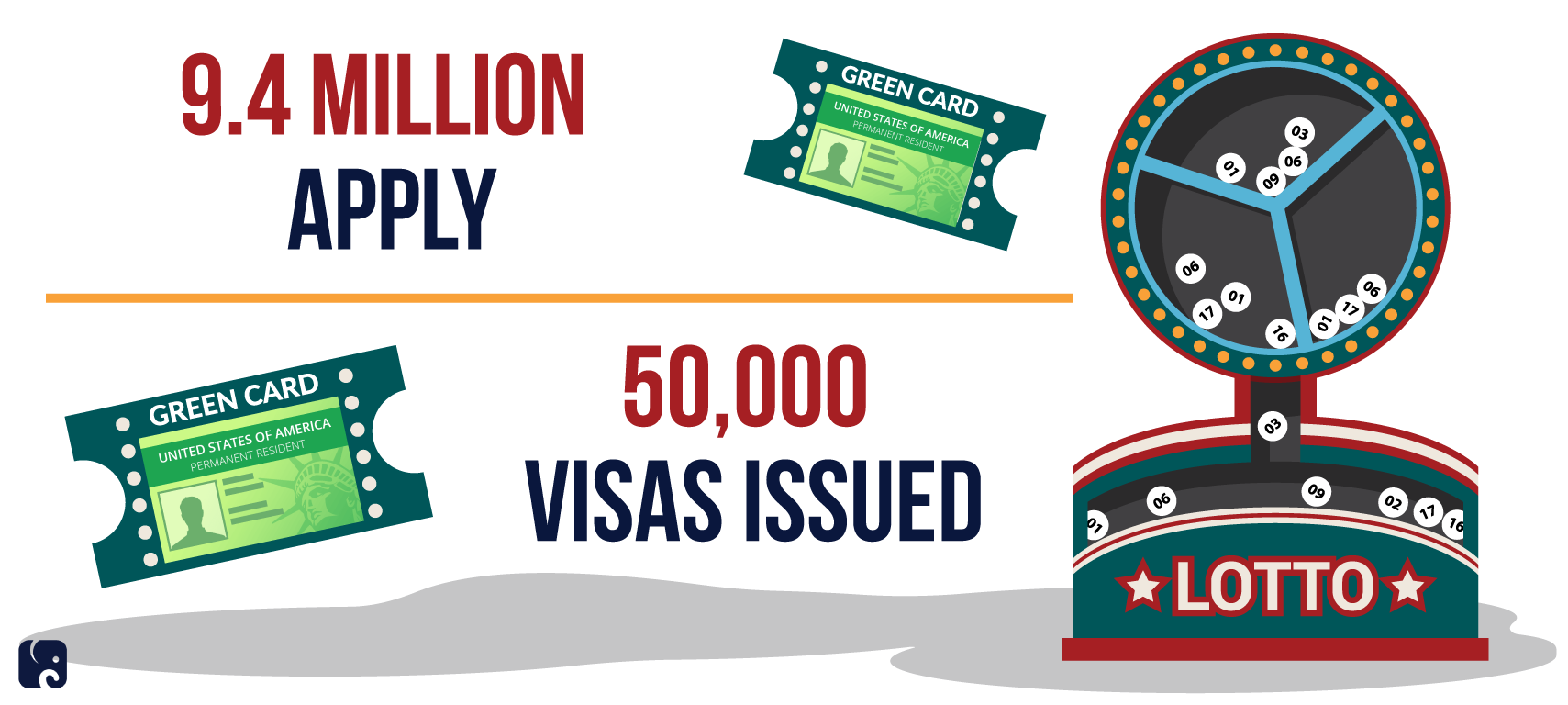The Diversity Visa Program
Key Takeaways
- The diversity visa program provides, through a random drawing, 50,000 green cards annually to people from countries with low rates of emigration to the U.S.
- Africa, Asia, and Eastern Europe are the most heavily represented regions in the program.
- Around a million green cards have been awarded since the first lottery in 1994.
The diversity visa program provides green cards for up to 50,000 immigrants each year from countries with low rates of emigration to the United States. The program is one of the ways that green cards are issued under the Immigration and Nationality Act. The other significant sources of green cards are for family-sponsored immigrants, employment-based immigrants, refugees, and people granted asylum.
Prospective immigrants in the diversity visa program must have a high school education or at least two years of specialized work experience and be otherwise eligible to be admitted to the U.S. Green cards allow people to live permanently in the U.S. and eventually apply for citizenship, generally after a waiting period.
Diversity Visa Lottery: Millions Apply Annually

Diversity visas are allocated geographically. Nationals of countries from which 50,000 or fewer immigrants came to the U.S. over the previous five years combined are eligible for diversity visas. Immigrants from any one country may not receive more than 7 percent of diversity visas issued annually.
Countries That Sent at Least 10,000 Diversity Immigrants from 2006 – 2015

Because their countries sent more than 50,000 immigrants to the United States over the previous five years combined, nationals of the following countries are not eligible for diversity visas in 2019:
- Bangladesh
- Brazil
- Canada
- Mainland China
- Colombia
- Dominican Republic
- El Salvador
- Haiti
- India
- Jamaica
- Mexico
- Nigeria
- Pakistan
- Peru
- Philippines
- South Korea
- United Kingdom (except Northern Ireland)
- Vietnam
Prospective diversity immigrants first register online for a “lottery” with the State Department – a randomized computer drawing that selects who may apply for a visa. People selected in the lottery fill out an application, interview in person with a consular official, and undergo a medical examination. They are subject to all of the visa admissibility grounds set forth in the law, including those relating to health, criminal history, likelihood of needing public assistance, and security. Spouses and dependent children of recipients may come to the U.S. with the recipient. Successful applicants receive green cards and are eligible to apply for citizenship after five years.
History and Statistics
The diversity visa program stems from the effects of the Immigration and Nationality Act of 1965, which eliminated the national-origin limits that had favored immigrants from European countries. When this change significantly decreased immigration from European countries, including Ireland, Congress allocated 50,000 visas for two years for immigrants from countries that were “adversely affected” by the 1965 law. The current diversity visa program was added to the INA in 1990. Since the first lottery in 1994, about a million green cards have been issued through the program.
The program has an annual cap of 50,000 green cards. For the 2015 diversity visa lottery, the State Department received more than 9 million online entries, with an additional 5 million derivative entrants of spouses and children. These derivative entrants count against the 50,000 cap. Because many lottery entrants are found ineligible after applying, and others do not submit applications, the State Department picks more than 50,000 entrants in the lottery although only 50,000 visas may ultimately be issued.
Most diversity visa recipients in recent years have come from Africa, Asia, and Eastern Europe. For 2016, Egypt, Nepal, Iran, the Democratic Republic of the Congo, Uzbekistan, Ethiopia, Ukraine, Russia, and Albania were the most represented countries of people who received diversity visas. Nationals of more than 150 different countries received diversity visas that year.
Legislative Proposals
On October 31, 2017, a native of Uzbekistan who had received a green card through the diversity visa program committed a terrorist attack in New York. President Trump responded by calling for an end to the program. Opponents of the program have raised questions about security risks, the fairness of the program, whether it allows in too many low-skilled immigrants, and whether a lottery is a good way to decide who should get to apply for green cards. Other critics have raised concerns with fraud by applicants. Supporters note that the program, which in 2016 accounted for only 4 percent of overall green cards issued, is the only way for many immigrants to enter the country.
Both Republicans and Democrats have supported legislation that would get rid of the diversity visa program in the past. In 2013, for instance, the so-called “Gang of Eight” immigration bill that passed the Senate with broad Democratic support, would have ended the program.
Next Article Previous Article
